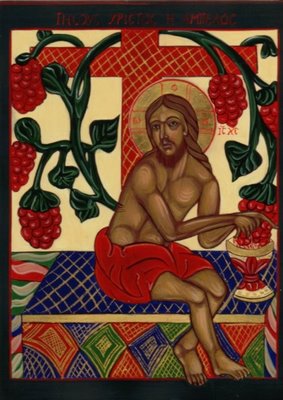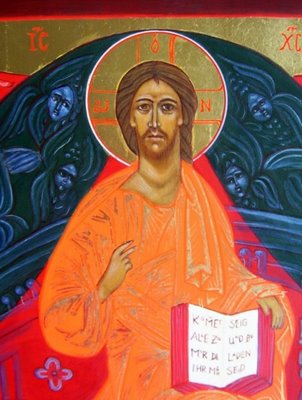"I am the vine, you are the branches"
This icon relates to Joh 15, 5:"
I am the Vine, you are the branches. He who continues in me and in whom I continue bears abundant fruit, for apart from me you can do nothing."
I am the Vine, you are the branches. He who continues in me and in whom I continue bears abundant fruit, for apart from me you can do nothing."
But here the quote does not end but continues with the warning of verse 6:
"If any one does not continue in me, he is like the unfruitful branch which is at once thrown away and then withers up. Such branches they gather up and throw into the fire and they are burned."
The icon shows Christ as the vine: The branches are born out of the side of Jesus, who sits on the altar (a reference to the last supper), and it is Jesus himself who harvest the fruit. So all takes place in Him. He is the source and likewise the fulfillment for the fruit.
"If any one does not continue in me, he is like the unfruitful branch which is at once thrown away and then withers up. Such branches they gather up and throw into the fire and they are burned."
The icon shows Christ as the vine: The branches are born out of the side of Jesus, who sits on the altar (a reference to the last supper), and it is Jesus himself who harvest the fruit. So all takes place in Him. He is the source and likewise the fulfillment for the fruit.
The branches are entwined round the cross. They find their hold there.
There may be much more to be discovered, which is left to the observer.






